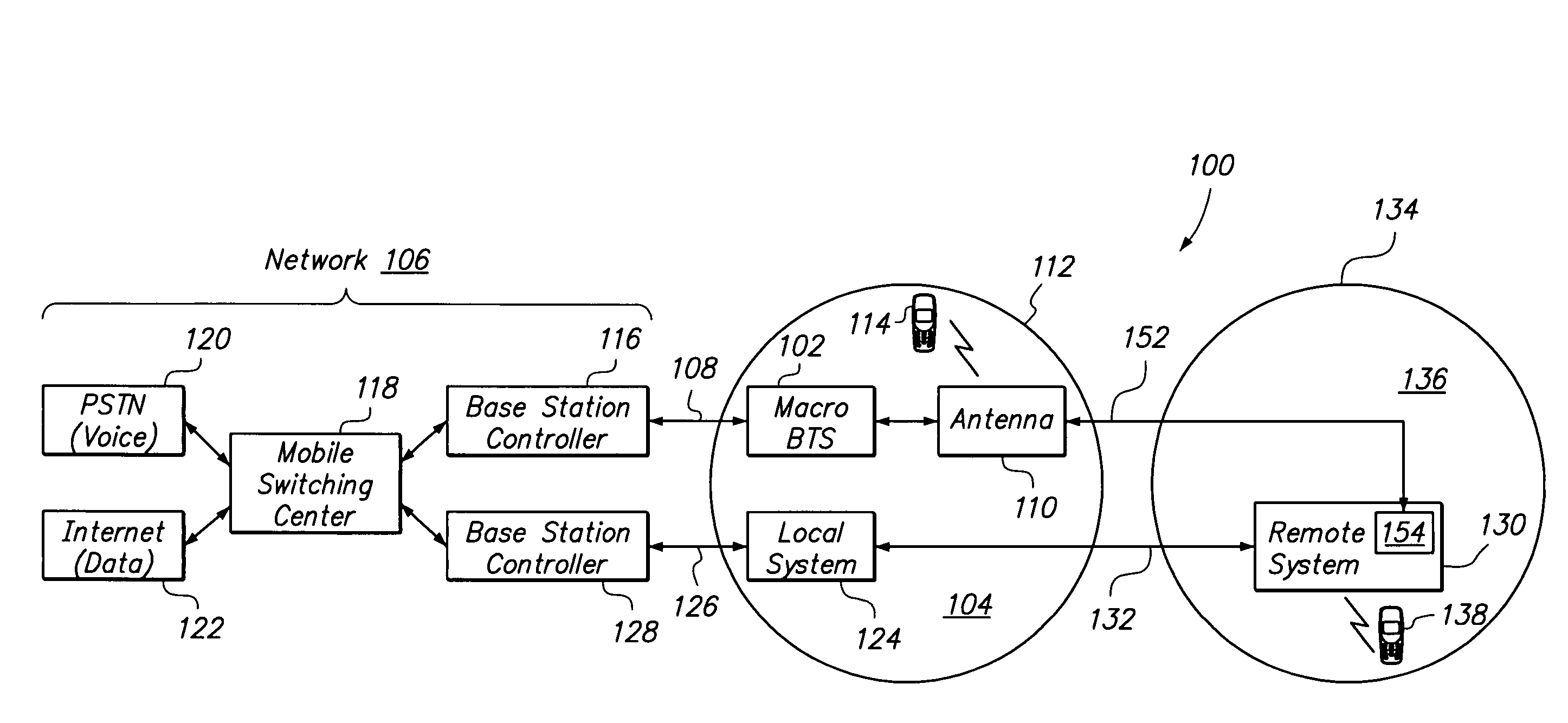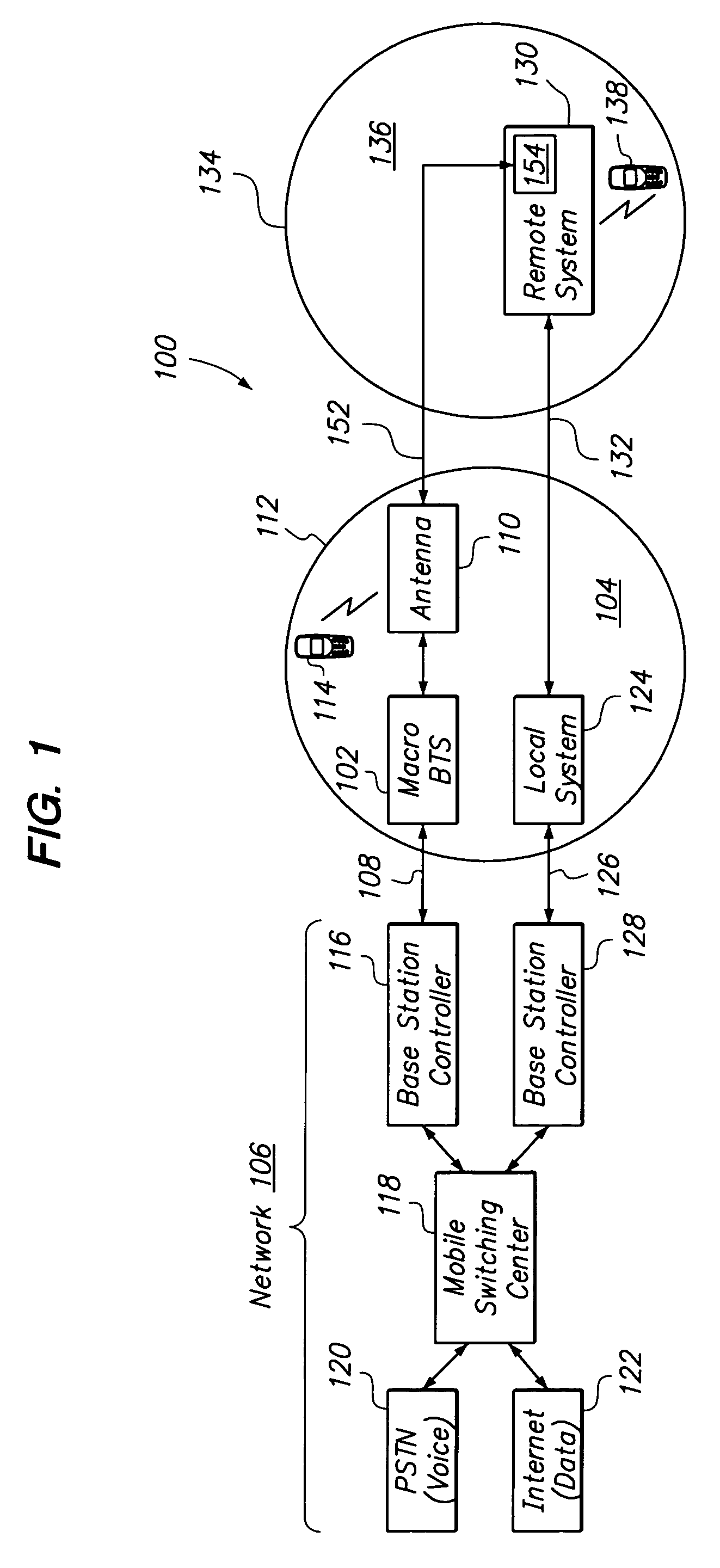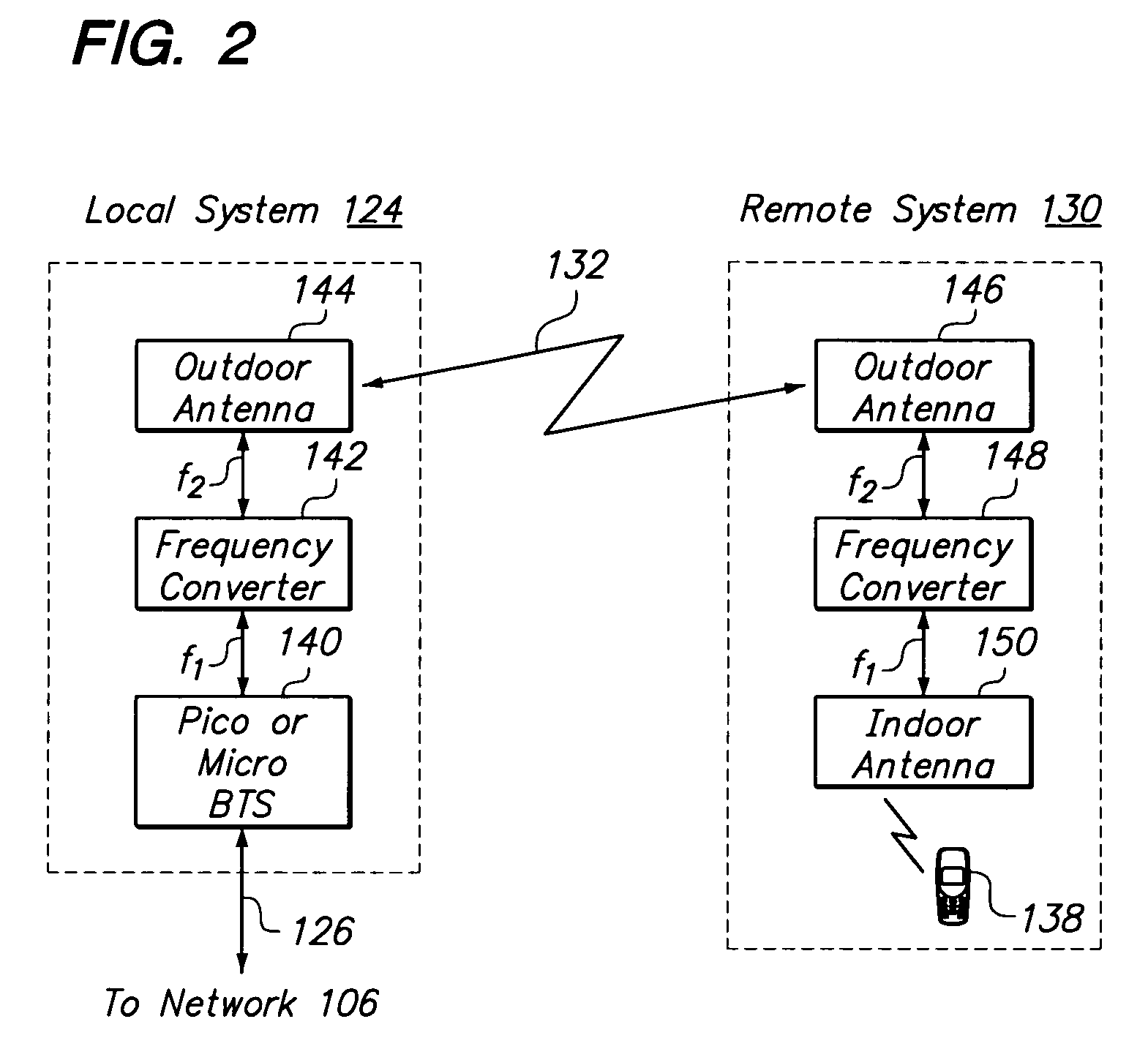System for and method of for providing dedicated capacity in a cellular network
a dedicated capacity and cellular network technology, applied in the direction of network topologies, electrical equipment, radio transmission, etc., can solve the problems of requiring additional infrastructure for each site, limiting measures, and a relatively low output power of the base station antenna
- Summary
- Abstract
- Description
- Claims
- Application Information
AI Technical Summary
Benefits of technology
Problems solved by technology
Method used
Image
Examples
Embodiment Construction
[0014]FIG. 1 illustrates a system 100 for providing dedicated capacity in a wireless cellular network in accordance with an embodiment of the present invention. As shown in FIG. 1, a base station 102 is positioned at a first location 104, which may also be referred to as the “local” site. The base station 102 is communicatively coupled to a communications network 106 via a backhaul link 108. The base station 102 is coupled to an antenna 110 at the first location to form a local coverage area 112. The antenna 110 may be an outdoor antenna. Mobile communications equipment 114 (e.g., a cell phone) within the coverage area 112 are communicatively coupled to the communications network 106 via the antenna 110, base station 102 and backhaul 108.
[0015]Within the communications network 106, the backhaul 108 is coupled to a base station controller 116, which is, in turn, coupled to a mobile switching center (MSC) 118. The MSC 118 is coupled to a public switched telephone network (PSTN) 120 (e...
PUM
 Login to View More
Login to View More Abstract
Description
Claims
Application Information
 Login to View More
Login to View More - R&D
- Intellectual Property
- Life Sciences
- Materials
- Tech Scout
- Unparalleled Data Quality
- Higher Quality Content
- 60% Fewer Hallucinations
Browse by: Latest US Patents, China's latest patents, Technical Efficacy Thesaurus, Application Domain, Technology Topic, Popular Technical Reports.
© 2025 PatSnap. All rights reserved.Legal|Privacy policy|Modern Slavery Act Transparency Statement|Sitemap|About US| Contact US: help@patsnap.com



